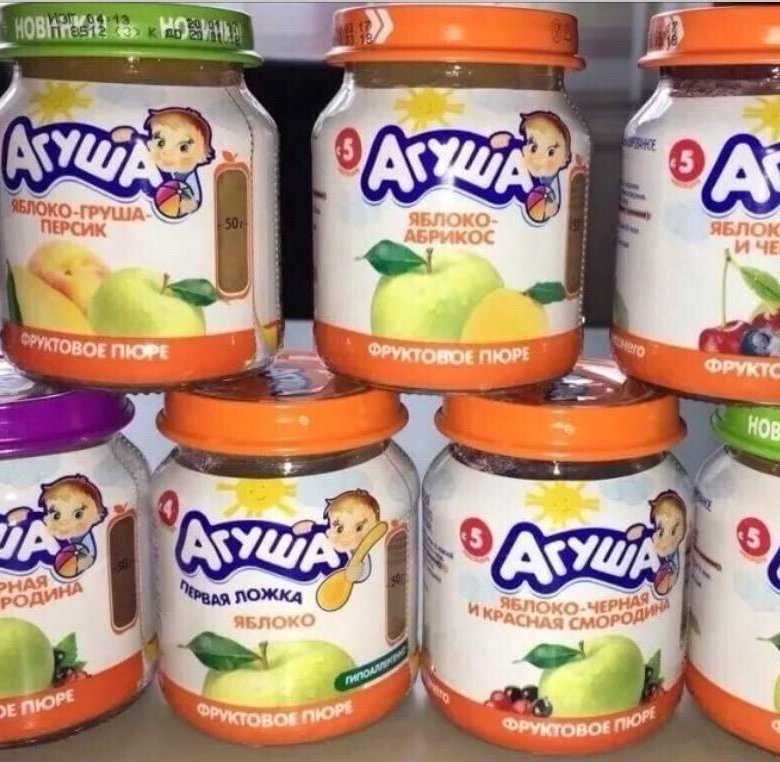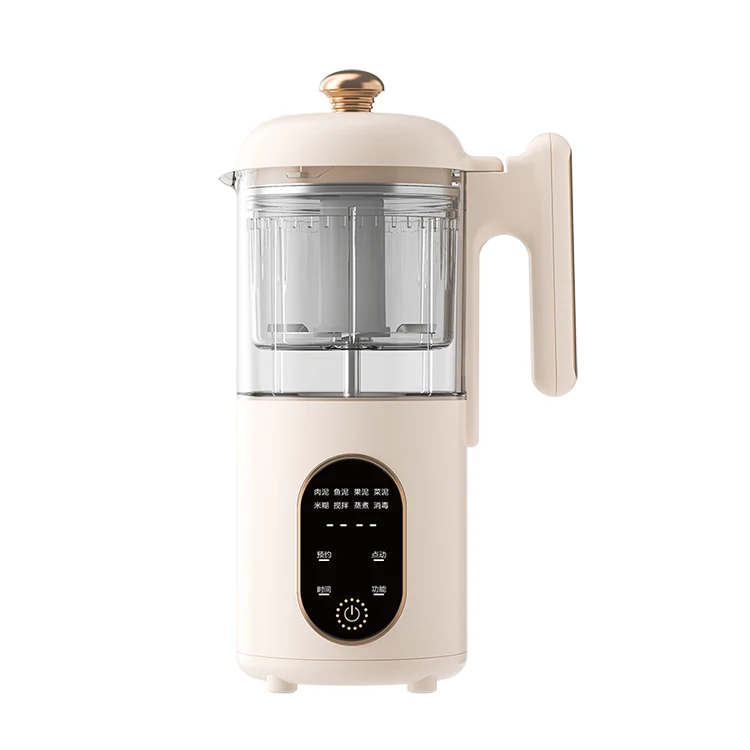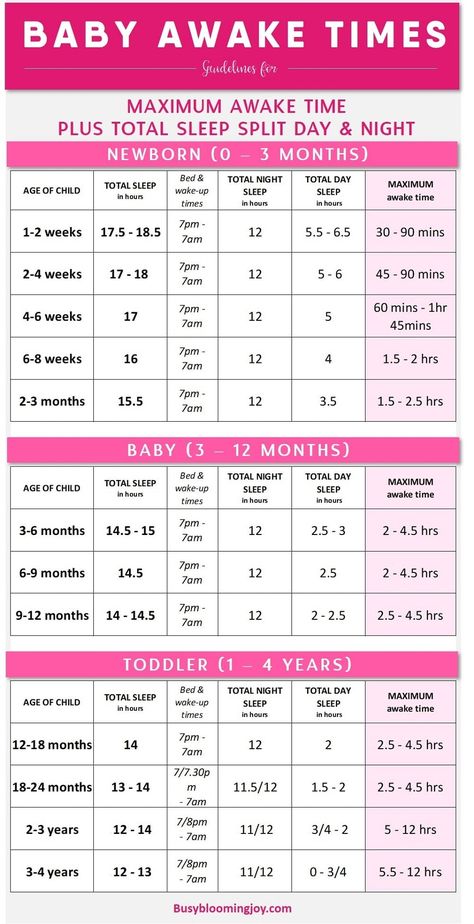Baby food cottage cheese
Cottage Cheese for Baby | Feeding Your Baby Cheese and Cottage Cheese Recipes | What Age to Feed Cheese to Baby
Image: Shutterstock
When can baby eat cheese and what kinds of cheese should you offer to baby?
As mentioned in the Dairy FAQ page, cheeses are typically offered to the non-allergic baby between 8 and 10 months of age. If your baby has a known or suspected dairy issue (either a milk protein or lactose intolerance) then you should wait to introduce cheese and other dairy when your infant is older. As always, you should consult baby’s pediatrician about introducing cheese to your baby as generalities may not apply.
Cheese is very good for baby and provides calcium, “good” fats and protein too. You can introduce cheese to your baby by offering the lighter tasting cheeses (Colby, Jack, Mild Cheddar) and also by offering her cottage cheese. Cottage cheese can be a really fun and tasty finger food for babies.
If baby cannot mash/grasp, melt cheeses over vegetables or add to veggie/meat purees. If baby can mash/grasp and has had Baby Finger Foods, cut cheeses into small bits and offer to baby as a snack.
Cheeses may also be offered to your little one via the old classic grilled cheese sandwich or mac-n-cheese – again, this will be dependent on how baby is with mashing/grasping other foods.
What about Soft Cheeses for Feeding My Baby, Are they Safe?
Cheeses such as Brie, Feta, Camembert, Roquefort, and Bleu Cheese are amongst those called “soft” cheeses. These cheeses are typically not cultured and in many countries, are not made from pasteurized milk; they are made from raw milk. Cream Cheese is not considered a “soft” cheese that you need to avoid because it is pasteurized.
Products made from raw milk may carry a bacteria called listeria. The incidence of listeria in the United States is very low as the vast majority of dairy products sold in the US are either pasteurized or cultured. The “safest” types of cheeses are Cottage cheese, ricotta, cream cheese, processed cheeses and hard cheeses like cheddar and parmesan. As mentioned, cultured dairy products like yogurt are generally considered to be safe for both a baby and a pregnant woman. Check the labels on the cheese products you buy and ensure they are either cultured or made from pasteurized milk products.
The “safest” types of cheeses are Cottage cheese, ricotta, cream cheese, processed cheeses and hard cheeses like cheddar and parmesan. As mentioned, cultured dairy products like yogurt are generally considered to be safe for both a baby and a pregnant woman. Check the labels on the cheese products you buy and ensure they are either cultured or made from pasteurized milk products.
How can I feed my baby cottage cheese; do you have any “recipes” for giving baby cottage cheese?
Cottage cheese is a good choice for dairy if your baby has been OK with yogurt and/or other cheese. The one thing about cottage cheese that you might be mindful of is the texture. For babies just starting out on dairy, cottage cheese might not be a good choice as a first starter due to it not being as highly cultured as yogurt. For those infants who do not have a lot of experience with textures and lumpy foods, cottage cheese may not be a good starter for dairy is due to the texture.
You can puree cottage cheese and mix it with fruits and even veggies if you like. If your baby is doing well with texture and dairy such as yogurt, cottage cheese is one of those foods that makes a nice finger food (albeit a very messy one).
Ideas & Types of Cheese for Feeding to Your BabyTypes of Cheeses: Colby, Cheddar, Monterrey Jack, Parmesan, Romano, Cottage Cheese.
Always buy Cheese from a Deli and ensure you buy full cheese and not a “Cheese food product” such as Velveeta or those packaged cheese slices. While there is nothing terribly wrong with these cheeses, we prefer our babies to have only natural real cheese without any artificial colors or fillers.
Colby, Cheddar, Monterrey Jack, Parmesan, Romano- Shred it and offer is as finger food – it’s cheaper to buy a block and then shred it yourself but you can buy the pre-shredded cheese
- Melt it over baby’s veggies
- Melt it over some toast points, pita bread or any whole grain bread
- Stir it into baby’s rice and noodle dishes
- Add cheese to J&J’s Baby Meatballs
- Scramble egg yolks with shredded cheese for extra nutrition and added Yum.

- Grate some cheese over your baby’s meal to entice him to eat
- Cheese mixed and baked into pancakes (most particularly Buckwheat pancakes) is very yummy. Add a veggie to the mix for an extra yummy nutritious Cheesy & Veggie Cake “meal” or snack.
- Mix cottage cheese with your baby’s favorite fruit purée or fruit dices – we still love peachy cottage cheese.
- Spread cottage cheese and fruit purée over toast, a bagel or bread
- Mash cottage cheese and avocado for a healthy “meal” or snack
- Cottage Cheese is yummy when mixed with noodles and some grated cheese for a “quick” Faux lasagna.
- Serve cottage cheese with a pinch of pepper and garlic or a pinch of onion powder and pepper
- Chop some (cooked) veggies and mix with cottage cheese – offer mixed with rice or noodles if you desire
- Blend cottage cheese with lentils and beans
Remember, always consult with your pediatrician regarding introducing solid foods to your baby and specifically discuss any foods that may pose allergy risks for your baby.
SHARE ON FACEBOOK SHARE ON PINTEREST
Cottage Cheese + Fruit Bowl for Baby + Toddler
Home » Recipes by Age » 6-9 Months » Cottage Cheese + Fruit Bowl for Baby + Toddler
by Michele Olivier on September 17, 2019 (updated Feb 22, 2021)
Jump to Recipe
5 stars (4 ratings)
Cottage Cheese + Fruit Bowls are a fast and simple breakfast recipe for baby or toddler. This easy recipe can be made in the matter of minutes and with just about any fruit you happen to have on hand. Cottage cheese has a great thick texture which makes it easy for baby to use a spoon (or their hands) to eat. Great for 9+ months.
Cottage Cheese + FruitA fun, simple and easy breakfast for baby and toddler – cottage cheese and fruit bowls.
Filled with whole-fat cottage cheese, a sprinkle of cinnamon and a handful of chopped fruit of your choice.
This simple breakfast is full of protein, calcium, antioxidants and other essential vitamins and minerals for growing baby.
I have found that babies tend to love the tart taste of cottage cheese. But if you find that it’s just a bit too intense for their growing tastebuds, then I would try using frozen fruit instead of fresh in this recipe. Simply defrost any frozen fruit and save the naturally occurring juices. Take the thawed fruit out and chop it up while mixing in the fruit juices into the cottage cheese before adding the chopped fruit on top.
Cottage cheese has a great thick texture which makes it easy for baby to use a spoon (or their hands) to eat. Which makes it great for baby-led weaning, the finger food stage and toddlers!
Plus, you can use any fruit your little one prefers or that you have in your fridge – chopped strawberries, peaches, blueberries, raspberries, kiwi, cantaloupe, mango, pineapple, plums, banana, etc.
Reasons to Love these Cottage Cheese + Fruit Bowl- fast – takes less than 5 minutes to make
- rich in protein
- 3-ingredients
- great for baby-led weaning or the finger food stage
- 9+ months – or younger if you cut the fruit into small ‘pea’ sized pieces
- can serve for breakfast or as a snack
- customized to your families tastes – can use chopped strawberries, peaches, blueberries, raspberries, kiwi, cantaloupe, mango, pineapple or any other fruit you like.

- prep ahead and serve all week long
- healthy – filled with protein, calcium, antioxidants and essential vitamins and minerals for a growing baby
- Cottage Cheese – is a nutrient dense food that is full of protein, B vitamins, calcium, phosphorus and selenium. I would recommend buying an organic and whole-fat brand for baby and toddler, as they need healthy fats to help with their brain development.
- Fruit – I showed this recipe with chopped strawberries, peaches and blueberries but you can use whichever fruit your family prefers – raspberries, kiwi, banana, mango, pineapple, blackberries or cantaloupe. Just make sure to cut it into small enough pieces for baby. I labeled this as a 9+ month recipe because I showed bigger pieces of fruit in the photos, but you can easily make this recipe for 6+ months if you chop the fruit into ‘pea’ size pieces.

- Cinnamon – is high in antioxidants, promotes a heathy heart as well as fights infections and viruses. I also love it because it stimulates the brain!
- Prep: chop some fruit into small pieces – peaches, strawberries, blueberries or whichever fruit your tot prefers.
- Build the Bowl: spoon some cottage cheese into a bowl, sprinkle with cinnamon and then spoon the chunks of fruit on top.
- Serve: and enjoy
You can easily have your kids help you make these bowls
TODDLERS- Toddlers can help lay build the bowls.
- They can spoon in the cheese, sprinkle the cinnamon and place the chopped fruits.
- You can pretty much let older kids make this recipe by themselves.
- Using a non-sharp knife they help to cut the fruit.
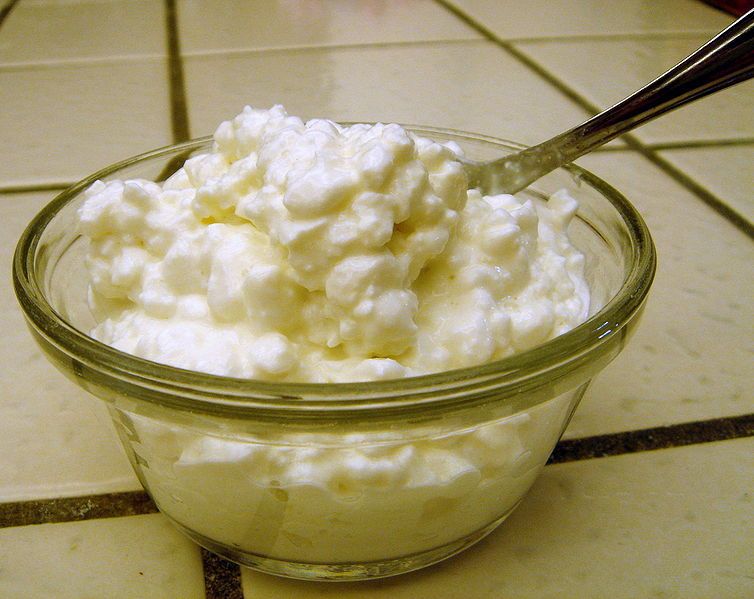
- They can spoon in the cheese, sprinkle the cinnamon and place the chopped fruits.
- 6 Baby-Led Weaning Breakfast Ideas
- 8 Healthy Toddler Breakfasts
- Easy Blender Spinach Pancakes for Baby + Toddler
- 15 Healthy Muffin Recipes for Baby + Toddler
- 3 Green Smoothie Freezer Packs for Toddler
- Golden Milk Waffles
I’D LOVE TO KNOW HOW IT TURNED OUT! LEAVE A COMMENT AND A ⭐️ RATING BELOW 👇
- 1/4 cup full-fat cottage cheese
- 1/8 tsp cinnamon
- 2 tbsp chopped fruit, strawberries, blueberries or peaches
Spoon cottage cheese into a bowl.
Sprinkle with cinnamon and chopped fruit.
Serve and enjoy.
Sweeten it Up: if the cottage cheese is a little too tart for your little one, you can use frozen fruit instead of fresh fruit to give this breakfast a little more sweetness. Simply defrost the frozen fruit before chopping the fruit up, making sure to use both of the fruit’s natural juices and the chopped fruit when serving.
Simply defrost the frozen fruit before chopping the fruit up, making sure to use both of the fruit’s natural juices and the chopped fruit when serving.
Yields: 1 serving
Age: 9+ months. I labeled this as a 9+ month recipe because I showed bigger pieces of fruit in the photos, but you can easily make this recipe for 6+ months if you chop the fruit into ‘pea’ size pieces.
Serving: 1serving, Calories: 68kcal, Carbohydrates: 6.6g, Protein: 7.9g, Fat: 1g, Saturated Fat: 0.7g, Cholesterol: 5mg, Sodium: 232mg, Potassium: 68mg, Fiber: 0.3g, Sugar: 4.3g, Calcium: 43mg
Did you make this recipe?
Tag @babyfoode on Instagram and hashtag it #babyfoode!
Pin Recipe Email a Friend
This post was sponsored by Happy Family Organics – check out all of their amazing homemade baby and toddler recipes and meal plans on their learning resources page!
Curd for kids : the best and worst in 2022
Cottage cheese was studied according to 88 quality and safety indicators (of which 5 are microbiological indicators, 42 are antibiotics).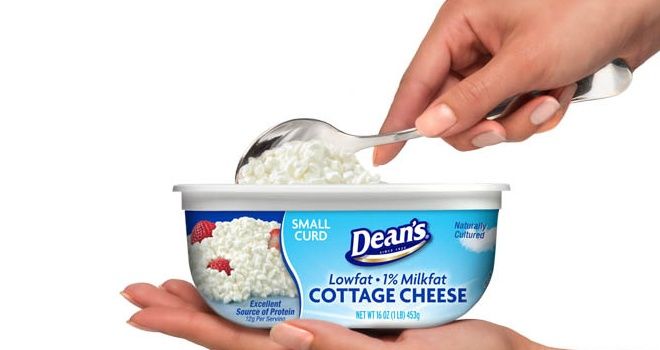 The product was examined for the content of preservatives (benzoic, sorbic and propionic acids) and artificial colors. Studied organoleptic indicators and credibility of the label.
The product was examined for the content of preservatives (benzoic, sorbic and propionic acids) and artificial colors. Studied organoleptic indicators and credibility of the label.
How is children's cottage cheese different from ordinary cottage cheese?
Larisa Abdullaeva
head of the standardization service of the Dairy Union of Russia, executive secretary of the technical committee for milk standards TK 470/MTK 532, expert, Ph.D.
- The technology for preparing cottage cheese for children and “adults” is the same - whey is removed from milk fermented with lactic acid bacteria by various methods: pressing or self-pressing (when whey flows out of the fermented mass itself, almost like at home in gauze), separation or ultrafiltration (this is special equipment, using which the serum is removed). Starter cultures of lactic acid bacteria for the production of children's and ordinary cottage cheese are exactly the same.
But they produce children's cottage cheese, like any other food product for children, in separate workshops or on a separate dedicated line. This is important, since special requirements for sanitary and hygienic production conditions are imposed on the manufacture of baby food.
For children under three years old, cottage cheese is produced by ultrafiltration, since with this method it turns out to be a delicate, smearing consistency, and it is more convenient and healthy for a child to eat just such cottage cheese. This is perhaps the very first difference from the product for adults, which has a crumbly, grainy texture. Cottage cheese for preschoolers and schoolchildren can also be of a crumbly consistency, but now the granular cottage cheese that is so popular now is, as a rule, a product for adults, it does not apply to baby food.
Of course, only the highest grade milk is used for children's cottage cheese, the microbiology and safety of which are somewhat different from the indicators of milk for the production of all dairy products: the standards in it are more stringent both in terms of microbiology and safety indicators.
Children's cottage cheese is less acidic. The maximum acidity index in it is 150 °T (Turner degrees), while in the usual one it is 240 °T. Such low acidity is important for the child's body, it is not yet able to absorb excess acids. It is impossible to use cottage cheese for adults in the baby’s diet, both because of its high acidity and because of the grainy crumbly structure - the child can simply choke on large particles of cottage cheese.
Children's cottage cheese, like regular cottage cheese, contains live lactic acid bacteria, which are very beneficial for the body. In children's cottage cheese produced by ultrafiltration, the exact amount of these bacteria is not standardized (it varies due to the peculiarities of ultrafiltration technology), but they must be there, otherwise the manufacturer could not call this product cottage cheese.
Children's cottage cheese contains a strictly regulated amount of fat and protein, and this is established by sanitary standards with the participation of pediatricians.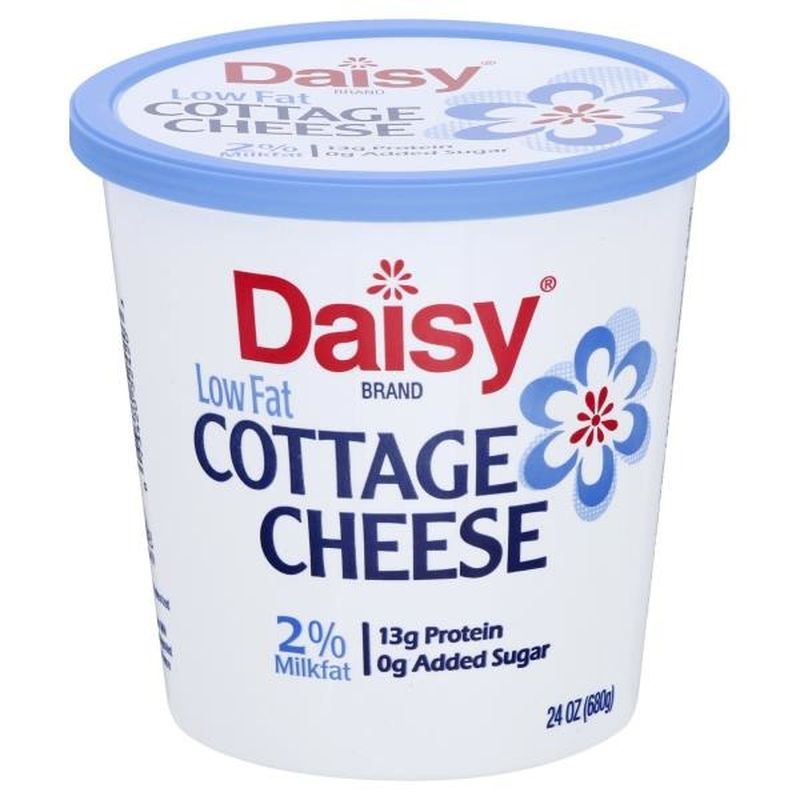 There is no “fat-free” cottage cheese for children, since the balance of all nutrients is always important for the baby’s body. In addition, some vitamins that are so important for a child, such as D, are fat-soluble and cannot be absorbed without milk fat. The standard fat range for baby cottage cheese is 4 to 9.%, while in the usual mass fraction of fat according to GOST 31453 varies widely - from 0 to 23%. The standard protein content in children's cottage cheese is 8-9%, in ordinary protein it contains much more - from 14 to 18% (the highest protein is fat-free cottage cheese).
There is no “fat-free” cottage cheese for children, since the balance of all nutrients is always important for the baby’s body. In addition, some vitamins that are so important for a child, such as D, are fat-soluble and cannot be absorbed without milk fat. The standard fat range for baby cottage cheese is 4 to 9.%, while in the usual mass fraction of fat according to GOST 31453 varies widely - from 0 to 23%. The standard protein content in children's cottage cheese is 8-9%, in ordinary protein it contains much more - from 14 to 18% (the highest protein is fat-free cottage cheese).
In children's cottage cheese, the amount of individual trace elements, primarily calcium, is normalized, but there are no such norms for ordinary cottage cheese. A children's product is also often produced enriched with various vitamins and microelements, which the manufacturer must indicate on the label.
Is baby cottage cheese safe?
According to the results of the study, in all the cottage cheese we studied, antibiotics and pesticides were not found in dangerous amounts for health.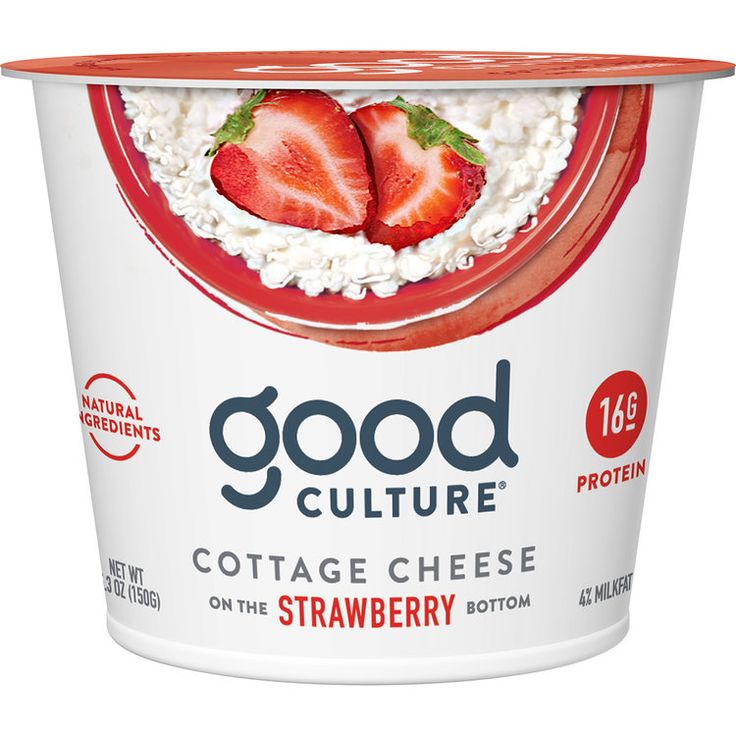
No aflatoxins detected Aflatoxins are waste products of fungi of the genus Aspergillus. These deadly mycotoxins are heat-resistant and insensitive to organic solvents.
Currently, the aflatoxin family includes four main representatives - aflatoxins B1, B2, G1, G2 and more than 10 compounds that are derivatives or metabolites of the main group - M1, M2, B2a, G2a, GM1, P1, Q1 and others.
The most dangerous and widespread aflatoxin is aflatoxin B1. Aflatoxin B1 is a hepatotropic poison and primarily affects the liver. When aflatoxin B1 is ingested with feed to dairy cows, its metabolite, aflatoxin M1, may be present in milk.
Aflatoxin M1 is found not only in whole milk, but also in reconstituted milk, in cottage cheese, cheeses, and yogurt. Dairy products contaminated with aflatoxin M 1 are environmentally dangerous for humans. Aflatoxins cause cancer of the liver and lungs, pulmonary edema, weight loss, feed conversion, and reduces the protective functions of the body. When high doses of aflatoxins enter the body, death occurs within a few days due to irreversible liver damage.
When high doses of aflatoxins enter the body, death occurs within a few days due to irreversible liver damage.
Cottage cheese does not contain preservatives (including salts of benzoic, sorbic and propionic acids), as well as synthetic dyes.
Replaced animal fat with vegetable or not?
The composition of cottage cheese does not contain soy, phytosterols, the mass fraction of fatty acids is normal. This suggests that manufacturers did not try to replace animal fat with vegetable fat.
Did you add thickeners?
Starch, as well as carrageenan, which can be used as thickeners by unscrupulous manufacturers (according to the standard, these are additives prohibited in cottage cheese) were not found.
What kind of milk was used to make cottage cheese?
Mass fraction of dry skimmed milk residue (SOMO ), according to the requirements of the technical regulation, should be at least 13.5%. A low SOMO may either indicate that low-quality milk was used to produce cottage cheese, or that part of the product was replaced with some additives (for example, water, starch or other thickeners).
The results of our study indicate that all manufacturers used high-quality milk for the preparation of cottage cheese. In addition, it has passed the pasteurization process, as evidenced by the phosphatase index.
For reference
Phosphatase determines the degree of pasteurization of milk. Pasteurized milk should not contain this enzyme.
Is there excess moisture in the curd?
The mass fraction of moisture in cottage cheese for children under one year old should not exceed 82%.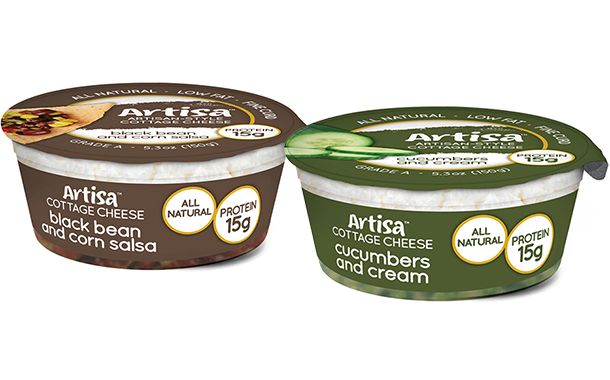 In our study, all cottage cheese met this requirement. The mass fraction of moisture varied from 76.98 to 79.28%.
In our study, all cottage cheese met this requirement. The mass fraction of moisture varied from 76.98 to 79.28%.
The quality of cottage cheese is also affected by such an indicator as titratable acidity. The technical regulations set the norm - no more than 150 °T (Turner degrees). If the acidity is higher, then this may indicate insufficient cooling of the product in production, as well as a violation of the storage temperature regimes throughout the refrigeration chain.
How much calcium is in cottage cheese?
Speaking of calcium, it should be noted that the technical regulation establishes a requirement - at least 85 mg / 100 g, and GOST regulates the upper limit - no more than 150 mg / 100 g.
All studied cottage cheese contains a sufficient amount of calcium, which varies from 92.65 to 105.59 mg/100 g.
Are estrogen hormones present in cottage cheese?
Experts from Roskachestvo examined cottage cheese for the content of estrogen group hormones, including ethinyl estradiol.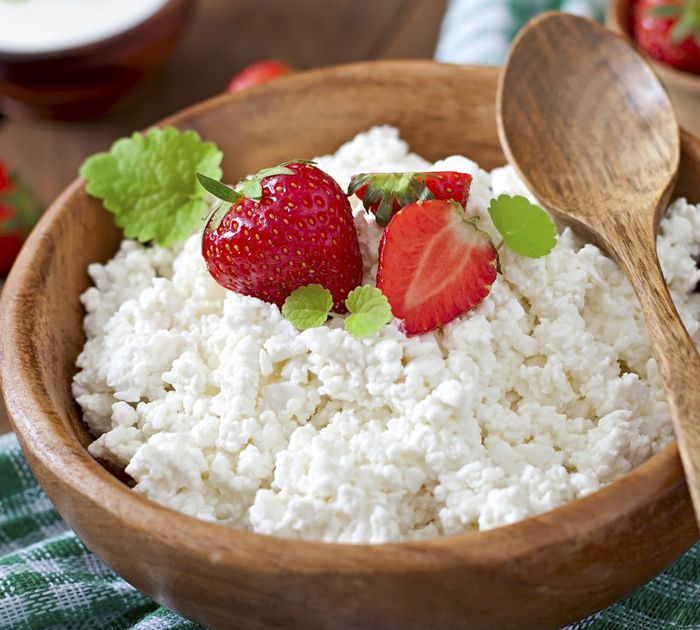 This study was done because there is a consumer myth that milk is a source of estrogens (female hormones) because hormones can be used to increase milk supply. Why is the presence of hormones feared in cottage cheese? Because cottage cheese is a concentrated product, therefore, according to parents who buy children's cottage cheese, it may contain more estrogen group hormones and this is not good for the child.
This study was done because there is a consumer myth that milk is a source of estrogens (female hormones) because hormones can be used to increase milk supply. Why is the presence of hormones feared in cottage cheese? Because cottage cheese is a concentrated product, therefore, according to parents who buy children's cottage cheese, it may contain more estrogen group hormones and this is not good for the child.
The results of the study showed that the mass concentration of estrogen group hormones, including ethinylestradiol, is below the permissible amount, that is, parents' fears are in vain - Roskachestvo experts dispelled this myth.
What are the benefits of cottage cheese for children?
Tatiana Butskaya
First Deputy Chairman of the State Duma Committee on Family, Women and Children
– Cottage cheese is a rich source of calcium and an excellent prevention of osteoporosis in the future. It is good if the cottage cheese is enriched with vitamin D, which helps the absorption of calcium. But if the child eats such cottage cheese every day, and the mother gives the baby vitamin D separately, then in this case the dosage of the vitamin should be reduced, after consulting with the pediatrician.
But if the child eats such cottage cheese every day, and the mother gives the baby vitamin D separately, then in this case the dosage of the vitamin should be reduced, after consulting with the pediatrician.
It is necessary to introduce cottage cheese into complementary foods of a child no earlier than 8-9 months. Of course, before this, a pediatrician's consultation will not hurt, since the decision on the exact timing of the introduction of cottage cheese into the child's diet is best taken together with the doctor who leads your baby. Early exposure to this product is not recommended because most children under eight months of age do not have enough enzymes to digest proteins, which can lead to allergies, kidney problems and anemia.
The daily norm for a one-year-old baby should not exceed 50 g, and you need to start acquaintance with cottage cheese with a teaspoon - this will be enough to understand whether the child tolerates the new product well. If you see that everything is going well, introduce cottage cheese into complementary foods.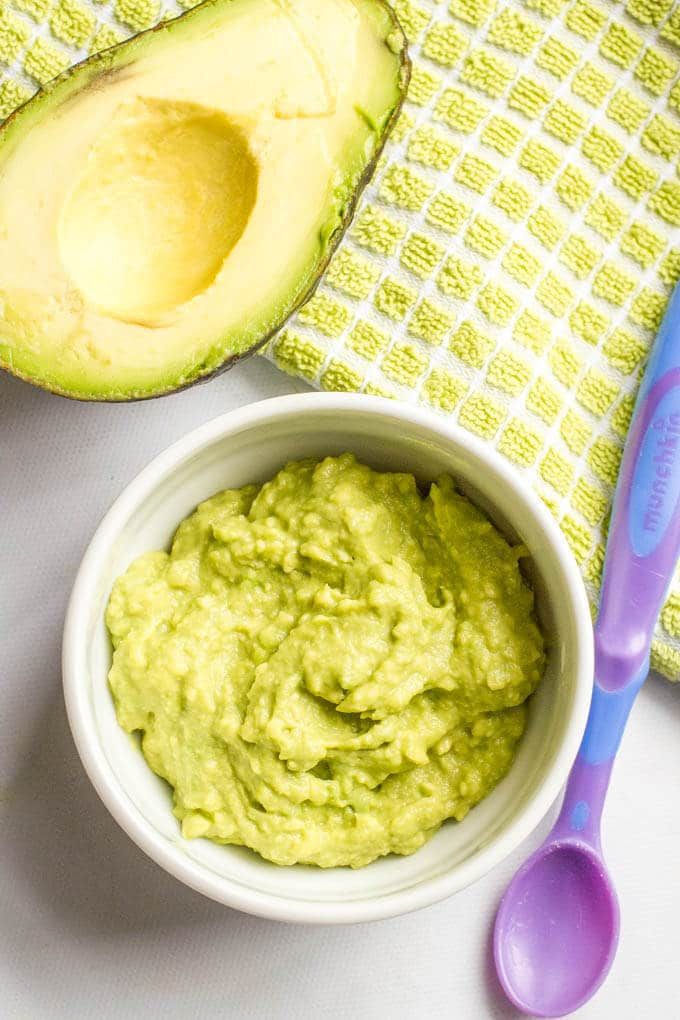 But you should not overload the children's body with cottage cheese, because the load on the kidneys increases.
But you should not overload the children's body with cottage cheese, because the load on the kidneys increases.
Taste, texture, color
GOST states that the consistency of cottage cheese for baby food should be soft, spreadable or crumbly (if the cottage cheese was prepared by pressing and (or) self-pressing). Cottage cheese may or may not contain particles of milk protein. The taste and smell should be pure sour-milk, and if the cottage cheese is with fruit filling, then with the taste and smell due to the added fruit components. The color should be white or with a creamy tint, uniform throughout the mass, and if the cottage cheese is with fruit filling, then with the characteristic color of the added fruit components, without foreign tastes and odors.
The results of the study allow us to state that all the studied cottage cheese complies with the established standards.
What to look for when buying baby cottage cheese?
“Look at the shelf where the store has cottage cheese for baby food,” advises Larisa Abdullaeva . – It should be “cold” and, of course, clean. It is advisable to check the storage temperature on a thermometer or sensor that the shelf should be equipped with. Almost all dairy products are perishable and must be sold at a temperature not exceeding +6 °C. It is absolutely impossible to buy children's cottage cheese from the "warm" shelf.
– It should be “cold” and, of course, clean. It is advisable to check the storage temperature on a thermometer or sensor that the shelf should be equipped with. Almost all dairy products are perishable and must be sold at a temperature not exceeding +6 °C. It is absolutely impossible to buy children's cottage cheese from the "warm" shelf.
Pay attention to the packaging. It must be airtight. Cottage cheese for young children is packaged in a package from 50 to 100 g, no more, since it must be eaten immediately in an opened package (opened cottage cheese is not subject to storage).
On the packaging must be an indication of the age for which the product is made for children.
The composition, in addition to proteins, fats and carbohydrates, contains information about the content of trace elements, such as calcium. Sometimes manufacturers fortify cottage cheese with vitamins, such as vitamin D.
Pay attention to the date of manufacture and expiration date.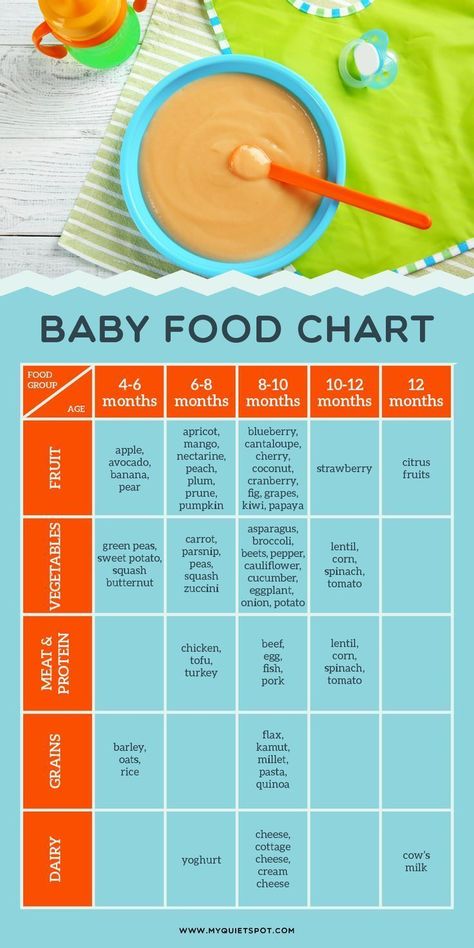 Cottage cheese for baby food, like any fermented milk product, cannot be stored for a long time. As a rule, the shelf life of baby cottage cheese in industrial sealed packaging does not exceed 14 days. If the cottage cheese was stored correctly, in the conditions indicated by the manufacturer on the package, then its quality will be the same throughout the entire shelf life. During this time, beneficial lactic acid microorganisms and added biologically active components, such as vitamins, are preserved in the product. But still, if there is an opportunity to choose a fresher product, take it. Cottage cheese is a “capricious” product, undesirable microorganisms and molds can develop in it even with minimal storage temperature violations. And of course, do not store an open glass in the refrigerator: children's cottage cheese cannot be stored in opened packages.
Cottage cheese for baby food, like any fermented milk product, cannot be stored for a long time. As a rule, the shelf life of baby cottage cheese in industrial sealed packaging does not exceed 14 days. If the cottage cheese was stored correctly, in the conditions indicated by the manufacturer on the package, then its quality will be the same throughout the entire shelf life. During this time, beneficial lactic acid microorganisms and added biologically active components, such as vitamins, are preserved in the product. But still, if there is an opportunity to choose a fresher product, take it. Cottage cheese is a “capricious” product, undesirable microorganisms and molds can develop in it even with minimal storage temperature violations. And of course, do not store an open glass in the refrigerator: children's cottage cheese cannot be stored in opened packages.
conclusions
-
All tested cottage cheese is safe. Experts did not reveal the presence of pathogenic microorganisms.
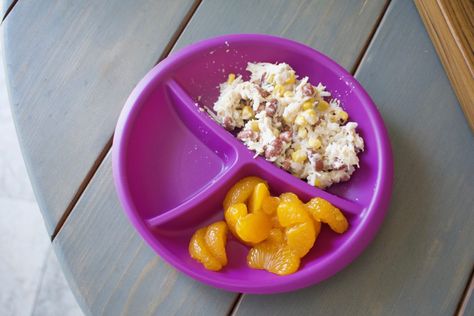 Didn't find antibiotics. No aflatoxins were found.
Didn't find antibiotics. No aflatoxins were found. -
Cottage cheese for baby food does not contain preservatives and synthetic dyes. Made from high quality pasteurized milk.
-
Manufacturers do not replace animal fats with vegetable fats, do not use thickeners (starch and carrageenan) in the production.
-
Curd does not contain estrogen hormones, including ethinyl estradiol.
-
The product contains enough calcium. Appearance, taste, smell, color correspond to the standards established by GOST.
-
The results of the study allow us to state that the cottage cheese of all studied brands is safe, high-quality and healthy. These are trademarks: Agusha, Am-Am, Auchan, VkusVill, Mama Lama, Myasnov, Our Masha, Rastishka, Tyoma, FrutoNyanya.
Artem Belov
Director General of the National Union of Milk Producers (Soyuzmoloko)
- The quality and safety of children's cottage cheese, as well as all products labeled "for children", are under the most stringent control of supervisory authorities. The production of the children's category requires the purest raw materials with a high protein content, modern equipment and well-established work algorithms - and not all enterprises of the sector operate in this segment. The Roskachestvo study confirms that processors take the issue of producing products for children very seriously and monitor its quality and safety.
The production of the children's category requires the purest raw materials with a high protein content, modern equipment and well-established work algorithms - and not all enterprises of the sector operate in this segment. The Roskachestvo study confirms that processors take the issue of producing products for children very seriously and monitor its quality and safety.
Follow the news, subscribe to the newsletter.
When citing this material, an active link to the source is required.
COTTAGE CHEESE in baby food. Truth and myths
Cottage cheese contains such important substances for the body as lactic acid, calcium, phosphorus, iron, magnesium and vitamins. At the same time, it contains only 3% carbohydrates and provides the body with high-quality protein containing amino acids.
Myths.
1. "Slightly spoiled cottage cheese can be used in baking." Cottage cheese is a capricious product. It does not withstand long-term storage, as lactic acid bacteria and mold quickly multiply in it. Dear mothers, no need to boil the mold, a pie with boiled mold is boring. It is not poisonous, but unsuitable for baby food.
It does not withstand long-term storage, as lactic acid bacteria and mold quickly multiply in it. Dear mothers, no need to boil the mold, a pie with boiled mold is boring. It is not poisonous, but unsuitable for baby food.
2. "Curd, pasta - this is the same cottage cheese." Cottage cheese can also be natural and thermized, thermized curd pastes have minimal benefits, a long shelf life and contain chemical additives. The persistently advertised curds for children are in fact nothing more than “curd products”. Sometimes mothers make excuses - they say that the child does not eat cottage cheese, and curds "from advertising" go with a bang. Mom needs a picture. The picture is called: my child is eating some kind of cottage cheese. Thermized cottage cheese is not cottage cheese, it is a dessert with flavorings. It does not replace baby cottage cheese. Better give the child a fruit.
3. “Our super curd “Dummy” is additionally enriched with calcium and contains vitamins A, B, C!”.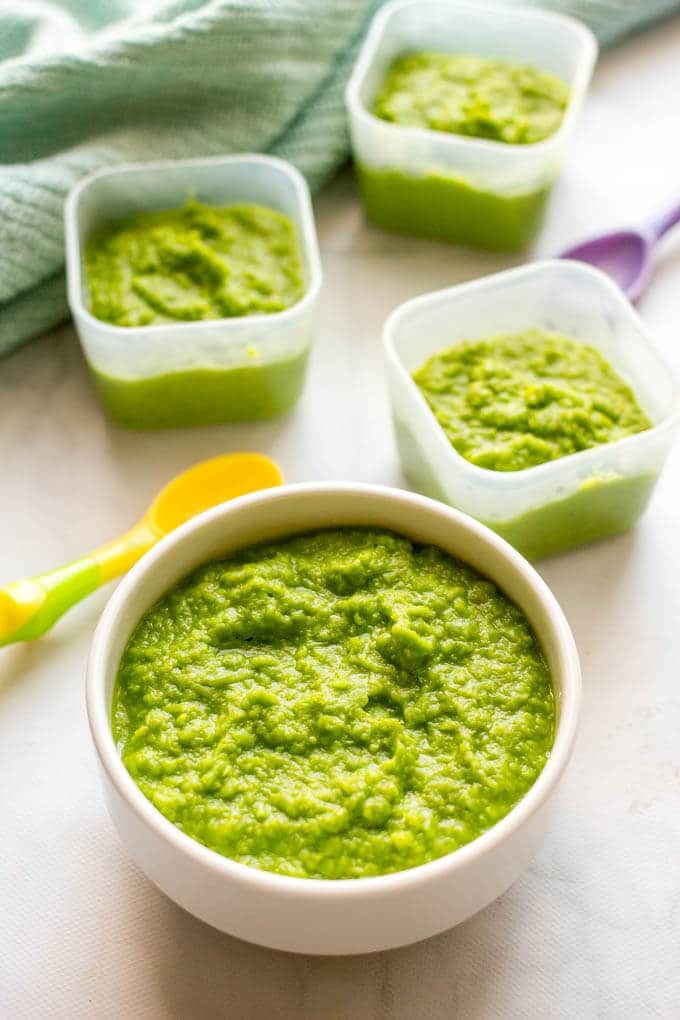 Moms are delighted: wow, there are so many benefits, but also additionally enriched! Don't be fooled. During heat treatment, vitamins and minerals left the mortal body of the former cottage cheese. And he, so be it, was enriched with something. A little. It is not a fact that calcium, which is considered the most indigestible element, will be absorbed from an acid-bright mess.
Moms are delighted: wow, there are so many benefits, but also additionally enriched! Don't be fooled. During heat treatment, vitamins and minerals left the mortal body of the former cottage cheese. And he, so be it, was enriched with something. A little. It is not a fact that calcium, which is considered the most indigestible element, will be absorbed from an acid-bright mess.
Terms of entry and norms. They start trying cottage cheese from 8 months, or even later. For a child who consumes breast milk or formula in sufficient volume, cottage cheese is simply not relevant. In the first year of life, a child should not be given more than 25-50 grams of cottage cheese per day. Curd contains heavy protein. Protein breakdown products are excreted by the kidneys. With artificial feeding, the immature kidneys of an infant may not be able to cope with the excessive protein load that occurs if the child consumes cottage cheese in quantities exceeding the recommended ones. It is known that excessive protein load in the first year of life, especially with artificial feeding, in the future can lead to obesity, atherosclerosis, arterial hypertension.






